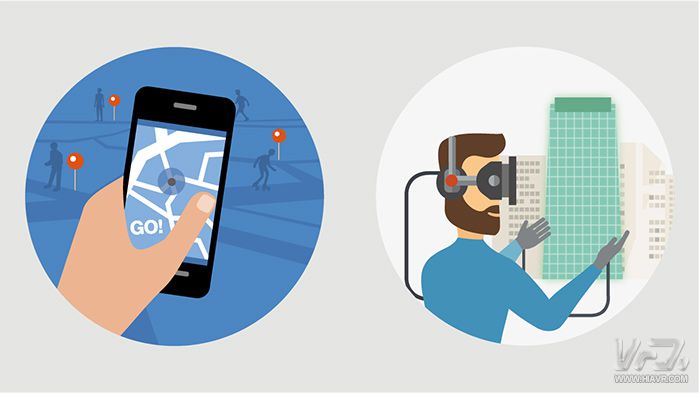
Over the past year, the most thrilling developments in the VR and AR industry haven’t come from the gaming sector but rather from smartphone manufacturers. This summer, Apple introduced ARKit, while Google launched ARCore—two groundbreaking technologies designed to bring augmented reality to iPhones, iPads, and Android-powered devices. These tools allow users to blend digital content with the real world seamlessly.
A recent report from Digi-Capital highlights that the VR/AR investment landscape is in a transitional phase, with growing interest shifting from high-end VR to mobile AR. Between the previous year and the third quarter of this year, a total of $18 billion was invested across 27 VR/AR sectors, with $300 million poured into the market during the last quarter alone.
Many developers are excited about the potential of AR, believing it could eventually drive consumers toward VR systems. The success of Pokémon Go last year demonstrated how AR can make people more comfortable with immersive experiences, which are a key part of the broader VR ecosystem.
One of the biggest advantages of AR is that it can be accessed directly through smartphones. Unlike VR, which often requires expensive headsets or PC connections, AR offers an accessible and convenient way for users to experience digital enhancements in their everyday lives. This ease of access has made AR a hot topic and has accelerated its development.
Microsoft took a major step in 2015 with the release of HoloLens, promoting the idea that wearable AR devices could one day replace traditional phones. However, despite early enthusiasm, Microsoft hasn’t released any new flagship Windows 10 Mobile devices since the Lumia 950. Recent price drops for models like the Elite X3 suggest that HP has abandoned its mobile ambitions. Some Microsoft executives have even hinted that Windows 10 Mobile isn't their main focus anymore, with more attention being given to developing apps for iOS and Android.
In October, Microsoft partnered with companies like Lenovo, Dell, HP, Acer, and Samsung to launch a VR headset based on its design, priced at just $300. Brian Blau, a Gartner analyst, noted: “There are some exciting games coming up, but without a strong ecosystem, they won’t reach their full potential.â€
Google and Apple have also been pushing AR forward by integrating it into their respective platforms. These ecosystems may serve as a gateway for Microsoft to re-enter the AR space. For developers, adding AR features to apps is relatively straightforward. But for Microsoft, lacking a dominant operating system could put them at a disadvantage compared to Apple and Google.
The AR market is still in its early stages, offering vast opportunities for innovation and business model development. With core technologies driving advancements, the combination of software, hardware, and content is becoming a powerful force for consumer adoption. Scott Montgomerie, CEO of ScopeAR, said, “We’ve finally reached the tipping point, and I believe the technology can now deliver a great user experience.†For businesses, AR can enhance training by overlaying digital information onto real-world environments, helping employees become familiar with complex equipment like oil rigs and rock drills.
Today, Apple, Google, and Facebook are all actively investing in AR applications. Apple has already integrated AR into iOS 11, signaling that this technology is no longer just a novelty—it’s set to transform how we interact with our daily lives. As AR continues to evolve, it's clear that we're only scratching the surface of what’s possible.
O.D114MM Hydraulic Dc Motors,O.D114MM Hydraulic Dc Motor,O.D114MM Dc Hydraulic Pump,O.D114MM Dc Hydraulic Pump Motor
Wuxi Jinle Automobile Motor Factory , https://www.wxjldj.com
